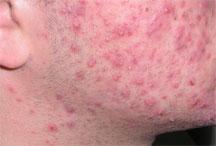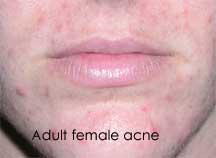Home Programs
In clinic programs should be supported with home care programs. It is important that skin remediation is maximized with a program that contributes to your results.
The Eyra clinics stock a number of products which have been scientifically tested to gain results for patients if used correctly, and consistently. A number of products can be used singularly, or added into an existing cleansing and moisturizing program or you may elect to purchase all your home care program from an Eyra Clinic.
To cleanse
The aim of cleansing is to clean the skin without changing the nature of the skin. A large number of cleansers strip the skin of its natural oils – leaving a tight feeling post their use. You are then required to tone the skin – to re-balance the pH change.
The ideal cleanser should clean the skin but not strip the oils, as these are essential to the skin’s health.
Toning
Not necessary with an Eyra home program.
Moisturizer
Moisturizing the skin can help to protect the skin, has an obvious effect on the external hydration and can enhance the feeling of the skin (improved texture). It is important that the moisturizer does not have an oil base – particularly if you suffer from any form of acne, as it will often precipitate an outbreak.
Different levels of hydration can be gained with different formulations. It is an individual preference what you may or may not like. Eyecreams are sometimes desired – but not always necessary – botulinum toxin is the medically proven treatment for wrinkles, and if this is a concern, then you may want to explore this treatment option.
Treatment Agents
Anti-aging
The area around the eyes develop wrinkles because we use this region extensively for facial expression – and the more that we move an area of skin, the more likely it is to develop a crease. Once the crease has become deep enough it develops into a fold or static wrinkle. Sun damage adds to the collagen changes which contribute to wrinkle development, and therefore those individuals with badly sun damaged skin tend to have deeper and more pronounced wrinkles.
Topical Vitamin C (L-ascorbic acid) has been shown to increase the activities of the fibroblasts – the cells that produce collagen, and interestingly enough Vitamin C is used by the body to cross-link (therefore strengthen) collagen strands in situ (in the body). The exact mechanism of how topical Vitamin C works is still under scientific investigation.
There are a number of Vitamin C preparations available – however there are very few patented formulations that have demonstrated capabilities. Vitamin C is a water soluble vitamin, and it denatures (breaks-down) on exposure to air and light. This is why a good para-medical Vitamin C is usually packaged in dark glass or opaque bottles – to protect the product from light.
After opening, over time, oxidation of Vitamin C causes the product to darken, and there is generally less active Vitamin C in the bottle after it has been opened for a period of time. Therefore it is important to check the use by date on the bottle at purchase and to use the product within a defined period of time, after opening, to ensure active amount of product is delivered to the skin.
A new form of therapeutic Vitamin C is becoming available – where 100% powdered Vitamin C is mixed manually before use –delivering up to 45% Vitamin C onto the skin. This may deliver a more active dose to the skin’s surface and helps reduce wastage of product. To determine if the Vitamin C that you are using is of a para-medical standard ask to see the scientific and medical studies proving the efficacy and stability of the product.
Retinol is another anti-aging chemical that has been medically proven to stimulate collagen. It is a derivative of Vitamin A – and is the basis of some forms of acne treatment. In Australia any retinol amount above 1% requires a script from a registered doctor. There is debate over what level of retinol is effective for the purposes of anti-aging – and it has been shown that retinols have the ability to improve the skin’s immune system – this may be particularly useful for sun-damaged skin prone to skin cancers.
Post-menopausal skin may benefit from hormonal skin products that contain estrogen and progesterone, either separately or combined. More sophisticated facial treatments may also include hydralaunic acid – a normal skin product that will help to increased hydration and moisturization. These items are available on script and are made by specialist pharmacists called compounding pharmacists.
Post-menopausal women often see an improvement in their skin once they begin Hormonal Replacement Therapy (HRT) due to the influence of female hormones on the skin. Script medication is avialable to those who are suitable for oestrogen therapy.
Anti-acne
There is a well established grading system for acne – not all acne is the same. Unfortunately acne develops as children pass through adolescence, when the skin responds to hormonal changes. Acne tends to occur during the phase of development when it can be socially crippling. There are biological, social and mental health aspects to the disease of acne. Each aspect needs to be treated for treatment to be successful.
Mild acne can be treated with an effective home care program that helps to treat the cause – partly from an over-production of oil and partly from obstruction of the oil duct, and the pileo-sebacous unit of the skin.
A step wise treatment program may include the use of the oral contraceptive pill (for girls), topical treatments agents (particularly using alpha hydroxy acids), oral anti-biotics and in-clinic treatments such as the Easy Peel™ microdermabrasion treatments.

Compliance by adolescence’s is often a problem, particularly as medical therapy can take up to 6 months to work and then may be ongoing. Combining treatment modalities often gives the fastest results – and therefore teenagers are encouraged to remain compliant because they can see the results.
Failure to respond to these treatment modalities may require a referral to a dermatologist. In Australia, there is a class of drug that can help with cystic acne, that only specialist dermatologist can prescribe. A doctor’s referral letter is needed to see a dermatologist in Australia.
Adult acne
Adults also suffer from acne, and may continue to suffer after being treated by a dermatologist – which may or may no have stopped the major outbreaks but not the ongoing minor ones. These people may be helped with the correct home care program and in clinic treatments.

Acne scarring
All acne treatment is aimed at limiting outbreaks and reducing or stopping scarring. Scarring in acne is not only caused by the infective mechanism of acne, but also the inflammatory reaction of the skin to the infection. It is important that acne sufferers are treated with the correct medications that reduce the infection and treat the inflammation. These treatments generally require a script from a medically registered doctor.
Dr Caswell can discuss these options with you during your consultation. All skin programs are individualized to ensure maximum results and take into account aims, outcomes, medical history and program compliance.
